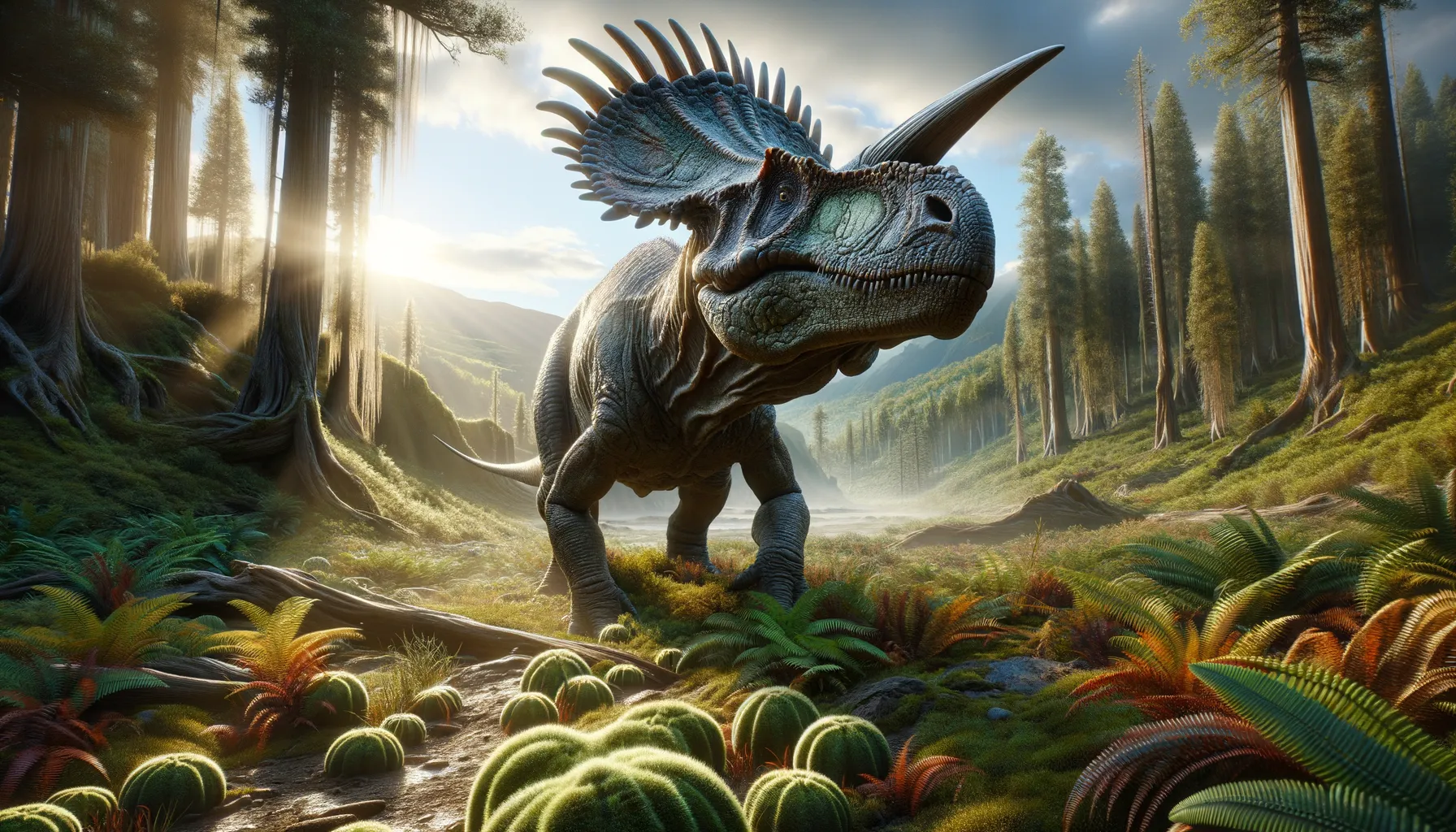
Stygimoloch
Dome-headed defender of the ancient realm.
Period
Cretaceous
Length
Roughly 3 meters long.
Height
Approximately 1.2 meters tall.
Weight
About 80 to 100 kilograms.
Stygimoloch was a dinosaur known for its distinct, bony dome on its head, which was possibly used for defense or display. It lived during the Late Cretaceous period. This herbivorous dinosaur roamed in North America, showcasing a fascinating mixture of gentle nature and impressive headgear that still intrigues scientists today. Its classification remains a subject of debate, highlighting the complexity of dinosaur taxonomy and evolution.
Diet
Stygimoloch was a herbivore, feeding primarily on the vegetation available in its environment. This likely included leaves, fruits, and possibly seeds, adapting to the plant life that thrived in the Late Cretaceous period.
Hunting
As a herbivore, Stygimoloch did not hunt for food. Instead, it relied on foraging for plant material, using its beak-like mouth to strip leaves and fruits from vegetation. It was probably a browser, consuming a variety of plant material.
Environmental challenges
Stygimoloch faced challenges like finding enough food resources as herbivorous species may have competed for the same plants. It also needed to avoid predators such as large theropods. The climate during the Late Cretaceous presented environmental changes, which could have influenced its survival.
Speed
Moderate speed, likely swift for short distances.
Lifespan
Estimated around 10 to 20 years.
First discovery
Discovered in Montana in the 1980s.
Fun Facts
- Stygimoloch is named after the river Styx from Greek mythology, combined with 'moloch' meaning demon, giving it a rather spooky name.
- Stygimoloch had thick, bony spikes on its skull, which may have been used for display or to headbutt rivals.
- This dinosaur was part of the Pachycephalosauridae family, known for their thick-skulled structures.
- Stygimoloch lived during the Late Cretaceous period, around 66 million years ago.
- It was a herbivore, feeding mostly on plants, possibly including leaves, fruits, and seeds.
- Stygimoloch was roughly the size of a large dog, making it a relatively small dinosaur.
- The discovery of Stygimoloch fossils primarily in North America suggests it roamed what is now the western United States.
Growth and Development
Stygimoloch likely went through significant growth stages, starting as a juvenile and gradually developing its distinctive cranial dome. This development might have played a role in social interactions or mating displays as it matured. Fossil evidence suggests rapid growth during its early years.
Habitat
Stygimoloch lived in what is now North America, favoring forested environments where it could find ample vegetation. These regions provided it with both food and cover from predators. It shared its habitat with a diverse range of other dinosaur species.
Interaction with other species
Stygimoloch interacted with other herbivorous dinosaurs, often competing for food resources. It also had to be vigilant of predators that roamed the Late Cretaceous landscapes. Social behaviors among its own kind might have included head-to-head displays or contests.
Natural lifespan
Its natural lifespan could range from 10 to 20 years, depending on environmental factors and predation.
Reproduction
Like other dinosaurs, Stygimoloch likely reproduced by laying eggs. Parental care levels are unknown, but it may have had some form of nest-building behavior. The eggs would have been vulnerable to predators, requiring strategic nesting sites.
Social behaviour
Stygimoloch may have lived in small groups or herds, which would provide protection against predators. Head-butting or showing off its dome could have been part of its social or mating rituals. These interactions could reinforce social hierarchies within groups.
Fossil locations
Fossils of Stygimoloch have been found primarily in North America, notably in Montana. These discoveries contribute valuable insight into its life and environment during the Late Cretaceous period. Fossil findings continue to fuel debates regarding its classification and relation to other species.
